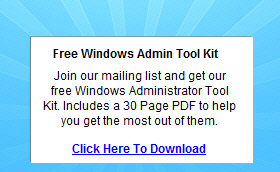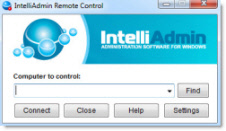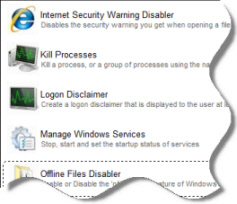I am doing upgrade from Exchange 2007 to Exchange 2013 SP1,
Is it mandatory to disable ipv6 on my Exchange 2007(all roles running of one server)
During Testing i noticed that if i disable ipv6 information store service is getting stopped?
2. Can i upgrade exchange 2007 to Exchange 2013 Sp1, Is SP1 the latest?
3. after decommisoning Exchange 2007, i am going to change my Exchange 2013 Sp1 servers ip.
I would give the same ip which i gave for Exchange 2007,
After changing ip on exchange 2013 do i need to make any changes.
Hi everyone,
I am doing upgrade from Exchange 2007 to Exchange 2013 SP1,
Is it mandatory to disable ipv6 on my Exchange 2007(all roles running of one server)
During Testing i noticed that if i disable ipv6 information store service is getting stopped?
2. Can i upgrade exchange 2007 to Exchange 2013 Sp1, Is SP1 the latest?
3. after decommisoning Exchange 2007, i am going to change my Exchange 2013 Sp1 servers ip.
I would give the same ip which i gave for Exchange 2007,
After changing ip on exchange 2013 do i need to make any changes.
If you have an All in one Exchange server then you absolutely need to disable IPv6 on the Exchange 2007 Server (I know I read the reason behind it somewhere, but I can't seem to find it). You cannot upgrade direct from Exchange 2007 to Exchange 2013 on the same server (just want to mention it based on the wording on number 2), however you can migrate from Exchange 2007 SP3 RU 10 (at a minimum) to a new Exchange 2013 SP1 (really CU4) or newer (the latest CU is 7).
As for number 3, I am not really sure it's a great idea to give your 2013 Server the same IP as your legacy server after it has been decommissioned. My reasoning here, is before you fully decommission you want to make sure everything is working properly (Internal/External client access (if necessary), Internal\External Mailflow stuff like that) so you will have everything configured for the new IP anyway, why go through the trouble of reconfiguring DNS/Firewall stuff? If you have certain things tied to the IP of the old server, just toss the IP of hte old server as an additional IP on the new server and make sure it's not configured to register in DNS.
Sorry my wording are wrong, it is migration on to a new hardware.
I have tested Exchange 2007 SP3(RU10) to Exchange 2013 SP1?
Should i go from Exchange 2007 SP3(RU10) to Exchange 2013SP1 and then to Exchange Server 2013 CU7 ?
or
Exchange 2007 SP3(RU10) to Exchange Server 2013 CU7 ?
Confused now? guide me.
If it was me, I would migrate to Exchange 2013 CU7, just because it's the latest and it's been out for a while so I feel like it's been put through the ringer and has had some real world testing. The one thing I would mention is that is to make sure you check out this blog post about Public Folders with CU7.
During Testing From exchange 2007 to Exchange 2013 SP1,
when i open PFStat.csv file, i can see below info, it means i dont have public folders.It is default ?Am i correct. So i hope i may not have issues with PF in CU7
FolderName,"FolderSize"
\IPM_SUBTREE,"0"
\IPM_SUBTREE\Internet Newsgroups,"0"
\NON_IPM_SUBTREE,"0"
\NON_IPM_SUBTREE\EFORMS REGISTRY,"0"
\NON_IPM_SUBTREE\schema-root\microsoft\exchangeV1,"369097"
- Edited by Risingflight 17 hours 59 minutes ago e
During Testing From exchange 2007 to Exchange 2013 SP1,
when i open PFStat.csv file, i can see below info, it means i dont have public folders.It is default ?Am i correct. So i hope i may not have issues with PF in CU7
FolderName,"FolderSize"
\IPM_SUBTREE,"0"
\IPM_SUBTREE\Internet Newsgroups,"0"
\NON_IPM_SUBTREE,"0"
\NON_IPM_SUBTREE\EFORMS REGISTRY,"0"
\NON_IPM_SUBTREE\schema-root\microsoft\exchangeV1,"369097"
- Edited by Risingflight Friday, February 20, 2015 5:49 PM e
Thanks alot for the support, i will give go with CU7 and
do i need to configure receive connector or is it configured by default.If guide me?
During Testing i could not remove public folder database in Exchange 2007 so i had to remove it from schema.
CONFIGURATION -- CN=Microsoft Exchange,CN=Services,CN=MyOrganization,CN=AdministrativeGroup,CN=MyServer,CN=InformationStore,CN=PublicFolderStorate,CN=PublicFolderDatabase
I have deleted the PublicFolderDatabase object. then it worked.
I just need to cross check, is this right object in schema to be deleted
- Edited by Risingflight 6 hours 29 minutes ago r
Thanks alot for the support, i will give go with CU7 and
do i need to configure receive connector or is it configured by default.If guide me?
During Testing i could not remove public folder database in Exchange 2007 so i had to remove it from schema.
CONFIGURATION -- CN=Microsoft Exchange,CN=Services,CN=MyOrganization,CN=AdministrativeGroup,CN=MyServer,CN=InformationStore,CN=PublicFolderStorate,CN=PublicFolderDatabase
I have deleted the PublicFolderDatabase object. then it worked.
I just need to cross check, is this right object in schema to be deleted
- Edited by Risingflight Saturday, February 21, 2015 5:20 AM r


